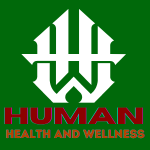The heart is a crucial organ in the human body with a primary
role in pumping blood to sustain life. Here's a breakdown of its structure,
function, anatomy, and some facts in simple language:
Structure:
The heart is a muscular organ located in the chest, just
slightly to the left. It is divided into four chambers – two atria (upper chambers)
and two ventricles (lower chambers). These chambers work together to pump blood
throughout the body.
Function:
The main job of the heart is to circulate blood. Blood carries
oxygen and nutrients to different parts of the body, ensuring that cells get
what they need to function properly. The heart accomplishes this through its
rhythmic pumping action.
Diagram:
A simple way to visualize the heart is as a four-chambered pump.
The atria receive blood, and the ventricles pump it out. Blood travels through
blood vessels, such as arteries and veins, to reach various body parts.
Anatomy:
The heart is made up of muscle tissue, called myocardium, which
contracts to pump blood. It is surrounded by a protective sac called the
pericardium. Valves within the heart prevent blood from flowing backward.
Facts:
The heart
beats about 100,000 times a day.
An adult
heart pumps around 5 to 6 quarts (4.7 to 5.7 liters) of blood per minute.
The heart
has its electrical system, generating its rhythmic contractions.
In essence, the heart is like a powerful pump that keeps blood
circulating, providing the body with the oxygen and nutrients it needs to
survive and thrive. Understanding its structure, function, and basic facts
helps us appreciate its vital role in maintaining our well-being.

.png)